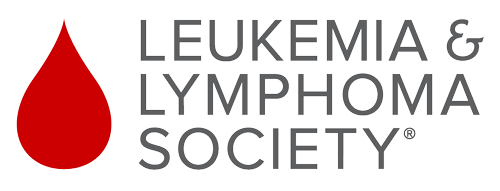I have multiple myeloma and I have been treated for it for the last 13 years. What is the latest news on the side effects from CAR T-cell therapy?
- by Elizabeth C
from USA
Transcript:
Elizabeth C: Hi. I have multiple myeloma and I have been treated for it for the last 13 years. I was wondering if you could tell me what the latest news is on the side effects from CAR T-cell therapy. What is the percentage of the worst side effects like coma and other serious effects and how is that treated. And finally, do you have any idea on who is at the greatest risk for the serious side effects? Thank you.
C. Ola Landgren, MD, PhD: Hi, I’m Ola Langren. I’m a professor of medicine and I’m chief of the myeloma division of the Myeloma Research Institute at the University of Miami. That’s a very good question you’re asking me. What are the side effects that can happen when patients are receiving CAR T cells? CAR T cells are, as the name indicates, cells that are manipulated. They come typically from the same person. That’s what most of these CAR T cells are in the field.
For now, we only have two FDA approved CAR T cells, and they always come from the same person. There are research studies that are investigating donors that are donating cells that could potentially become allogeneic approved CAR T cells, but we don’t yet have those FDA approved. They’re still in trials. So, when you give immune cells back to a person, the first thing that happened is that the immune system would recognize these cells, and it would trigger a lot of immunological reactions. Sort of similar to what happened when a person captures an infection, for example, or something else enters the body. The immune system is always there, it’s always alert. So, it’s trying to fight if there is something that doesn’t necessarily belong to the body. The CAR T cells, although they come from the same person and you give them back, they don’t look exactly like normal T cells. So, the immune system will react. And that is what we call cytokine release syndrome. There are a lot of immunological mechanisms, small proteins that were released by various cells in the immune system that are involved trying to react to this. And part of it is also because these T cells actually are already attacking myeloma when they start entering the body and they continue to do so. So that is also part of what triggers these reactions. So, cytokine release syndrome is like fever can be a drop in blood pressure and it can be generalized symptoms similar to what it would look like if an infection were to happen or an allergic reaction. The good thing is that this will level off and there are also a lot of medications we use in the hospital to alleviate this, to treat this, so it goes away and doesn’t come back again. It usually comes depending on what CAR T cells we do after a fixed number of days, so it could either be after one or a few days or it could be after about a week depending on which of these different products we use. And it usually lasts for 1 or a few days and then it usually levels off.
You also asked me what’s the percentage, what’s the risk of having this cytokine release syndrome? Well, unfortunately, that’s probably the majority of patients. The numbers vary from study to study, but it’s probably over 90%. But as I indicated, we have a lot of treatments, and we know what to look for. And we know when these things happen, we know how to handle it, manage it to get rid of it so it doesn’t come back again. And also, I should say that many patients that have it, they have a lower grade. We grade them from grade one to three and four. Grade four is the more severe form. Many of these are grade one or grade two, but that can rarely be three or four, but the vast majority is one and two. And that’s obviously a very good thing. You also ask me who are patients at the greatest risk. So, the truth of the matter is that we do not yet have any established risk factors. We don’t have any particular tests that we can use to say this person will or will not have a developmental CRS or this individual or this individual will not have a more severe. So, we do not have that. There is a lot of research looking into those types of things. I think on a clinical note, a patient that has very aggressive myeloma that is escalating. If such a patient were to be given CAR T cell, that is probably not the optimal way of using the CAR T cells because that can turn into more severe reactions. Both the CRS, there was also something I have not yet talked about called ICANS, which is immune cell associated neurological syndromes. And then if you have someone who is accelerating with the disease, if you give CAR T cells that’s more likely to happen.
So, I think one of the principles is that the patient needs to have some form of what we call debulking, some form of therapy that can control the disease so it doesn’t accelerate and then the CAR T cells can be given. That’s a much safer way to do it. That is the clinical way of doing it. And that also decreases the risk. Lastly, I would say that the ICANS, these immune cell associated neurological syndromes can include various types of symptoms. It can be more severe neurological things that are very rare, thankfully, but it can also include headache or pain in different parts of the body. So that can be immune driven symptoms that could involve, for example, pain, as I mentioned. And instead of giving painkillers, what we would do in the hospital many times is that we would give steroids. So, we would use something called tocilizumab, which is an IL-6 receptor inhibitor, which is a drug that we would use. So, we would treat these immune induced symptoms with immune-based strategies. So that’s a lot of detail.
So, I would like to thank you, Elizabeth, for these great, great questions. These are very, very good clinically, very relevant questions, so thank you.


